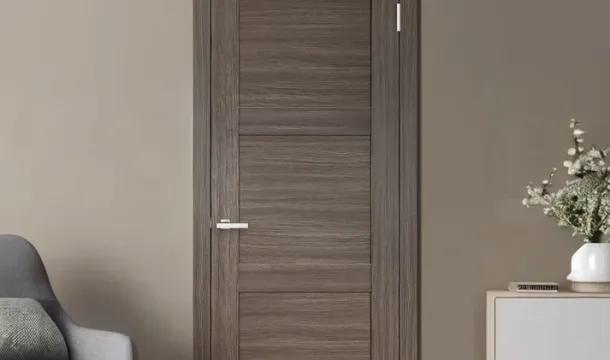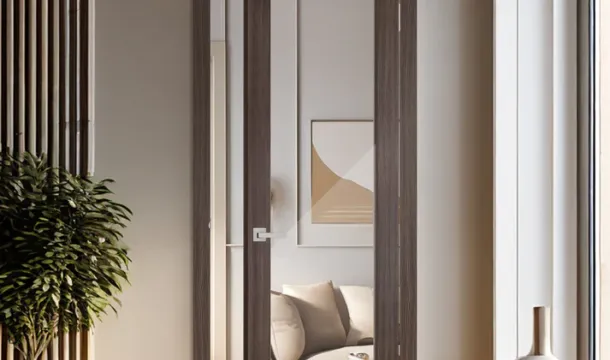Reasons for the Growing Popularity of Solid Wood Interior Doors
Popular Articles
Durability stands out as a key advantage when selecting timber panels for indoor applications. Unlike composite or hollow alternatives, these products offer long-lasting resistance to wear, dents, and environmental changes common in Canadian households. Their robust structure ensures fewer replacements and lower maintenance costs over time.
Natural grains and textures contribute not only to aesthetic appeal but also enhance sound insulation properties. This makes hardwood panels an excellent choice for creating quieter, more comfortable living spaces without additional treatments or modifications.
Customization options with genuine lumber are extensiveranging from traditional styles to modern minimalistic designsallowing designers and homeowners to tailor doorways that complement specific interior themes effortlessly. This flexibility combined with proven longevity explains why many in Canada prioritize these materials during renovations or new builds.
Durability Benefits Compared to Alternatives
Choose hardwood doors for unmatched longevity; they resist dents, scratches, and warping significantly better than MDF or hollow-core counterparts. High-density grains in species like oak, maple, or cherry deliver structural integrity that endures daily wear without compromising appearance.
Engineered options often succumb to moisture damage within a few years, whereas carefully finished solid timber doors maintain stability even in fluctuating humidity typical of Canadian climates. This reduces repair frequency and replacement costs substantially.
- Impact Resistance: Hardwood doors absorb shocks efficiently, minimizing visible damage from knocks or bumps common in busy households.
- Refinishing Potential: Multiple sanding and refinishing cycles restore surface quality without weakening the door's core, unlike laminate or veneer alternatives.
- Thermal Performance: Dense wood fibers provide better insulation properties compared to composite materials, contributing to energy savings over time.
Investing in solid timber slabs translates into fewer maintenance interventions. For instance, a well-maintained oak door can remain functional and visually appealing for decades where engineered models may require full replacement after just 510 years due to delamination or swelling.
Practical Recommendations
- Select species with high Janka hardness ratings to maximize resistance against dentshardwoods like hickory (1820) or walnut (1010) outperform softer options.
- Apply protective finishes such as polyurethane or oil-based varnishes designed for interior environments prone to moisture fluctuations.
- Avoid using hollow-core models in high-traffic zones where durability demands are critical; opt instead for solid timber units with reinforced cores if weight is a concern.
Impact On Home Insulation Quality
Choosing doors crafted from natural timber significantly enhances thermal insulation within living spaces. Solid timber's cellular structure provides superior resistance to heat transfer compared to hollow or engineered alternatives, reducing energy loss by up to 25% in interior partitions.
In colder Canadian climates, this translates into lower heating costs and improved comfort. A dense wooden slab limits cold drafts and mitigates temperature fluctuations between rooms, supporting a more stable indoor environment throughout the year. Sealing solid wood door frames properly further optimizes airtightness, preventing infiltration that undermines insulation efforts.
The intrinsic durability of these doors ensures long-term performance without warping or gaps forming over time, which often occur in less robust materials and degrade insulating properties. For projects targeting energy efficiency certifications or green building standards, specifying high-quality timber doors contributes measurable improvements in overall thermal resistance (R-value).
To maximize benefits, pairing these units with complementary weatherstripping and insulated jambs is recommended. This approach addresses common weak points where heat escape typically occurs. Ultimately, investing in well-crafted wooden panels supports both immediate comfort gains and sustained energy savings through enhanced home insulation quality.
Customization Options For Design
Opt for tailored finishes and panel configurations to match specific aesthetic goals while enhancing durability. Wood species selectionfrom oak and maple to walnutallows variation in grain, color, and hardness, directly impacting longevity under daily use. Incorporating intricate carvings or minimalist flat panels offers distinct visual statements without compromising structural integrity.
Hardware choices such as hinges, handles, and locks further personalize appearance and function. Matte black or brushed nickel fittings complement modern designs, whereas antique brass suits traditional interiors. These components must be chosen with durability in mind to avoid frequent replacements.
Finishing techniques like staining, painting, or applying protective sealants extend lifespan by shielding surfaces from moisture and scratches. Custom glazing optionsincluding frosted or clear glass insertsintroduce natural light flow while maintaining privacy, adding both style and practical value.
Adjustable sizing accommodates non-standard openings common in older Canadian homes, ensuring a precise fit that prevents warping and drafts over time. Combining these customization elements results in doors that not only fulfill design intent but also uphold long-term performance demands.
Long-Term Maintenance Requirements
Regular application of high-quality wood sealants or varnishes every 23 years preserves surface integrity and enhances durability. Avoid harsh chemical cleaners; instead, use mild soap solutions and soft cloths to prevent finish degradation. Inspect hinges and hardware annually to ensure smooth operation and prevent misalignment caused by wood expansion or contraction.
Humidity control plays a critical role in maintaining structural stability. Maintain indoor relative humidity between 40-60% to minimize warping or cracking. In regions with extreme seasonal changes, consider using dehumidifiers or humidifiers accordingly. Promptly address scratches or dents with appropriate wood fillers or touch-up kits to avoid moisture infiltration that accelerates wear.
Preventive Measures for Longevity
Install door sweeps and weatherstripping to reduce exposure to dust and moisture, which can compromise durability over time. Lubricate moving parts biannually with silicone-based oils to reduce friction without attracting dirt buildup. For doors exposed to direct sunlight, apply UV-protective coatings to mitigate discoloration and surface drying.
Repair Strategies
Minor damage should be repaired immediately using fine-grit sanding followed by refinishing in matching tones. Deep cracks require professional assessment but can often be stabilized through epoxy injections or wood patching compounds designed for solid timber surfaces. Proper maintenance routines significantly extend functional lifespan while preserving aesthetic appeal.
Popular Articles

Choosing the Perfect Interior Doors for Your Canadian Home

Soundproofing Interior Doors: Which Options Are Best for Your Home?
